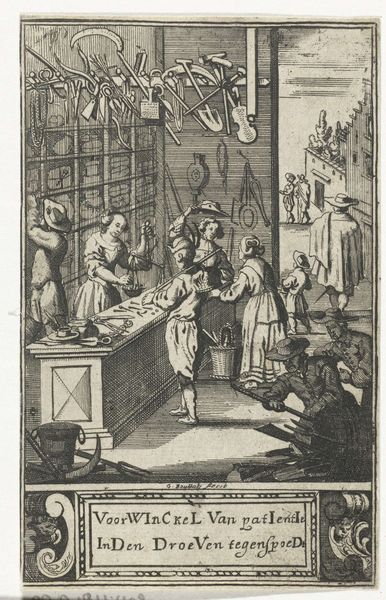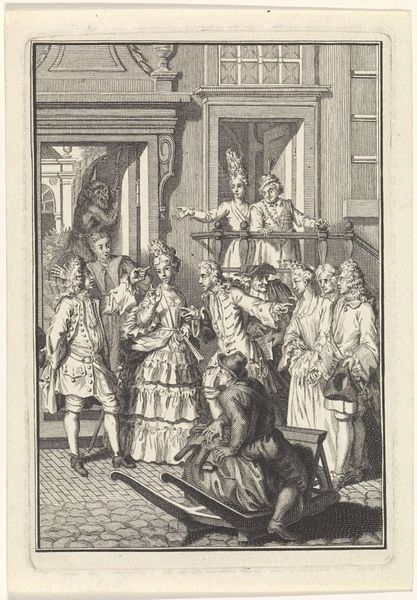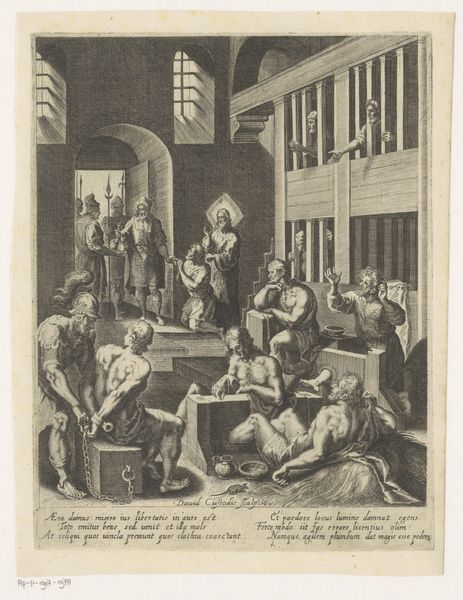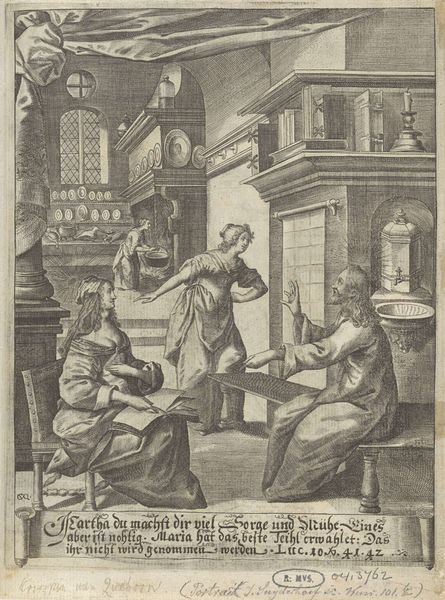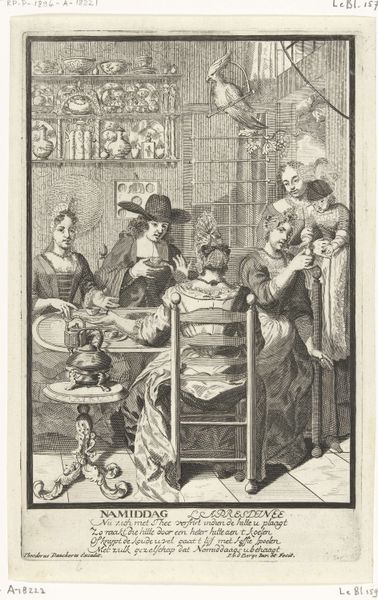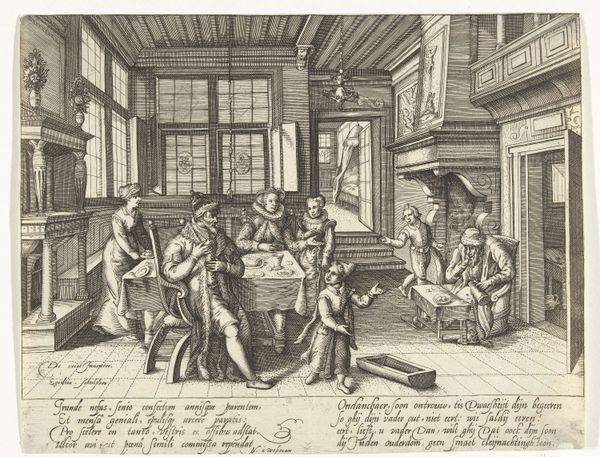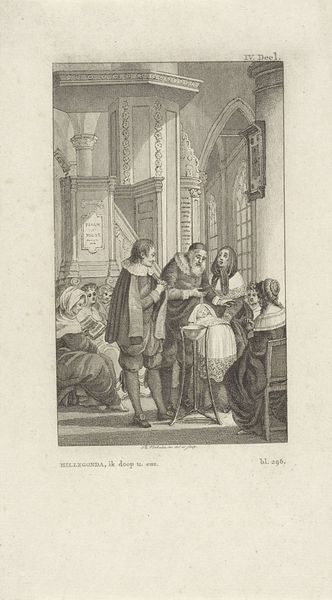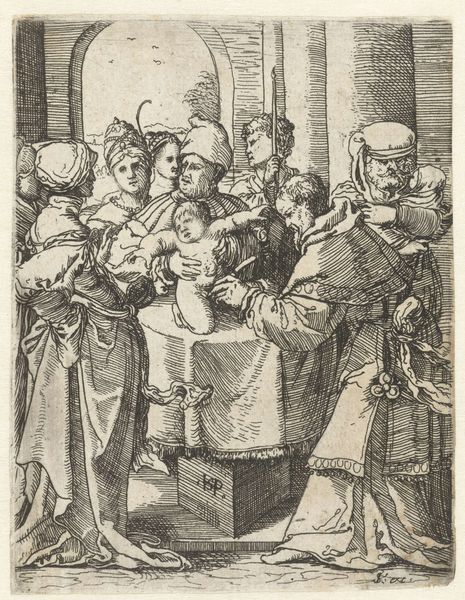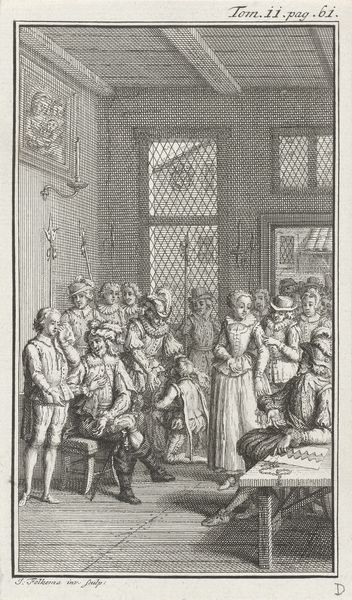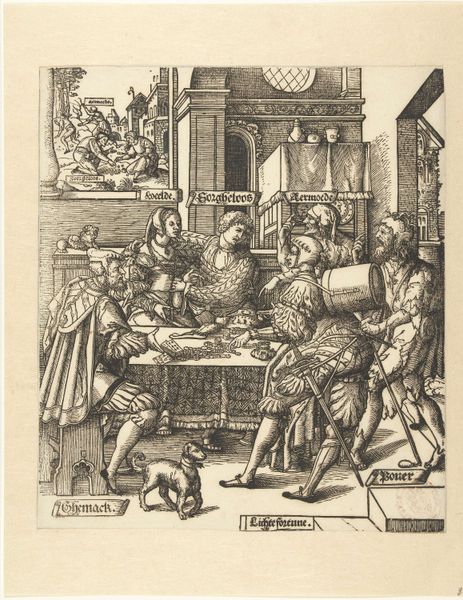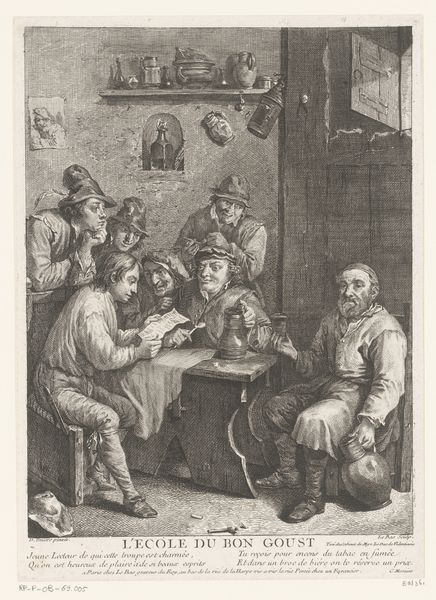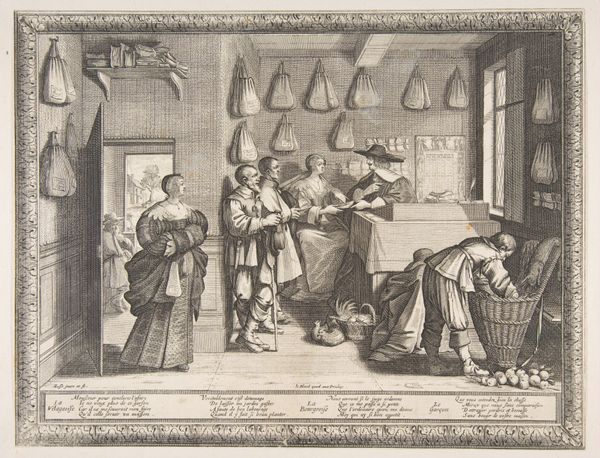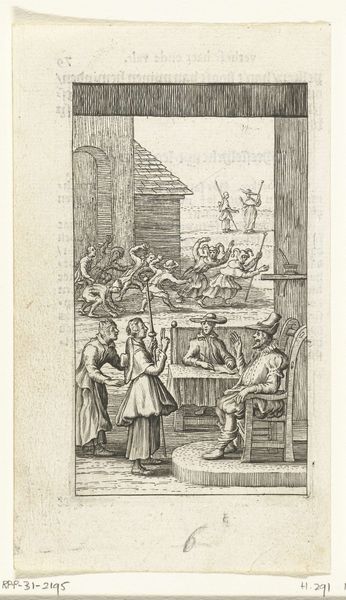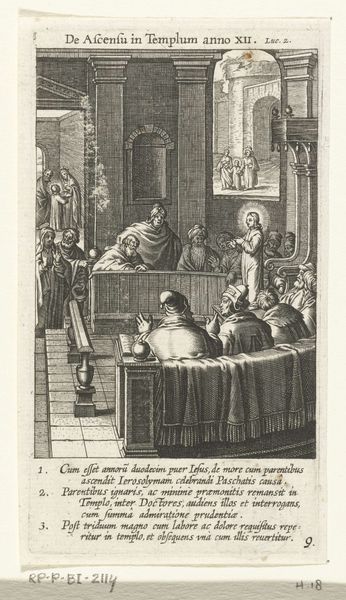
drawing, print, etching, ink, engraving
#
drawing
#
baroque
# print
#
pen illustration
#
etching
#
ink
#
genre-painting
#
history-painting
#
engraving
Dimensions: height 140 mm, width 84 mm
Copyright: Rijks Museum: Open Domain
Editor: So, this etching from around 1710-1715, “Marskramer in een herberg,” or “Hawker in a Tavern,” seems to be by an anonymous artist. The detail is incredible, especially considering the medium is just ink on paper. It's fascinating to observe this moment captured. What jumps out at you when you see this piece? Curator: For me, the real interest lies in the way this image foregrounds labor and commerce. Look at the traveling salesman, the “Marskramer,” the products he's peddling, and the tavern as a site of consumption. What are these goods? Who would purchase them? We must look at the historical background to understand the work done. Editor: He seems to be selling bottles, maybe medicines or spirits? It also begs the question about class; do you see a connection between class and the figures in this engraving? Curator: Precisely. Etchings like these were relatively inexpensive to produce, making them accessible to a broader audience. This suggests a burgeoning market for images depicting everyday life and, perhaps, a growing awareness of different social strata. This could reveal the lifestyle of the rising middle class who have enough money to enjoy taverns. Editor: That's fascinating. So, by examining the material aspects – the printmaking process, the depiction of goods, the setting of the tavern – we can gain insights into the social and economic realities of the time? Curator: Exactly. We see beyond a simple scene, towards a material culture snapshot and, more importantly, understand that the creation of this print itself contributed to the cycle of production and consumption that it depicts. I would be keen to learn who paid for it to be produced and its initial method of circulation. Editor: It’s amazing how looking at the materials and context can open up a whole new understanding of the artwork! Thanks for your explanation of this. Curator: My pleasure. I will be interested in seeing your views on how artworks contribute to production.
Comments
No comments
Be the first to comment and join the conversation on the ultimate creative platform.
